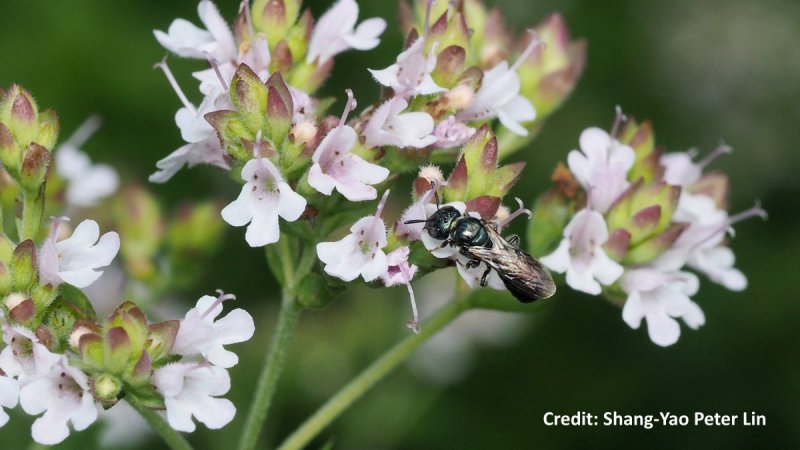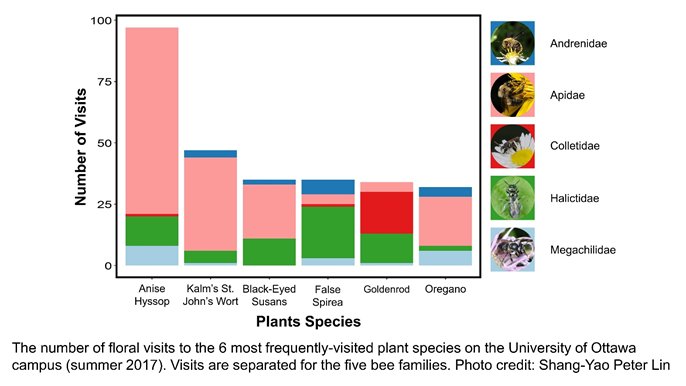By Megan McAulay
What types of bees live in urban environments? What can we do to better support them? These were the questions that motivated our campus pollinator surveys, an initiative to observe the pollinator assemblages at the University of Ottawa and encourage the campus community to plant more bee-friendly plants.
Our volunteers are mostly graduate students in ecology who are passionate about insects and flowers. Over the course of the summer months, we conduct weekly walkabouts to several greenspaces on campus where we identify the flower-visitors (bees, hoverflies, and bee-flies) as well as the plants they visit. We also plant native perennials such as Bloodroot, Heart-leaved Aster, and Wild Strawberry to increase the number of flowering plants that will help to sustain our neighbourhood bees throughout the growing season.
Last summer (2017), we noted over 500 pollinator visits to 46 different plant species during our campus walkabouts. The most frequently visited plant species included Anise Hyssop (98 visits), Kalm’s St. John’s Wort (52), Black-eyed Susans (46), False Spirea (39), goldenrods (34), and Oregano (33). In general, we found that pollinators enjoy plants with abundant flowers, long-blooming periods, and easily accessibly floral rewards (nectar and pollen).
We were also amazed by the diversity of bees we found across our urban campus! Over the course of the summer, we counted bees from five different families and over ten different genera! Moving forward, we hope to continue surveying the pollinators on campus as well as increase our public outreach by organizing more presentations on the plight of native pollinators and what can be done to help support them.
Megan is a recent graduate from the University of Ottawa in the master’s of science in biology program. She studied how pollen from different plant species affect bee survival and larval bee development. Pollen is an important food source for most bees and different plant species produce pollen that vary in their nutritional quality for bees. For example, pollens can differ in their protein content, they can lack essential nutrients, and they can also contain digestive barriers as well as toxic compounds. She hopes that her research will contribute to the development of conservation management strategies to better support native bee populations.


